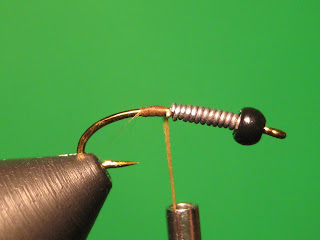San Juan Worm


Materials Needed:
Hook:TMC 2487 sizes # 14-18
Thread:Red 6/0
Body:Extra fine, red chenille
This is a very simple pattern that does pretty well in muddy water. I don't use this pattern as often as I should... This is actually my very first attempt at tying it as well.
 STEP 1:
STEP 1:
Start your thread, and wrap it to about the middle of the hook gap.
 STEP 2:
STEP 2:
Tie in your piece of chenille with a few tight wraps. Continue wrapping your thread forward around just the hook shank.
 STEP 3:
STEP 3:
When you reach the middle of the hook shank, lay your chenille down, and wrap a few tight wraps over it. Lift the chenille, and continue wrapping your thread around the hook shank.
 STEP 4:
STEP 4:
When you reach the eye of the hook with your thread, lay the chenille down and tie it in. Whip finish.
 STEP 5:
STEP 5:
With a lighter, burn the ends to length.
Hook:TMC 2487 sizes # 14-18
Thread:Red 6/0
Body:Extra fine, red chenille
This is a very simple pattern that does pretty well in muddy water. I don't use this pattern as often as I should... This is actually my very first attempt at tying it as well.

Start your thread, and wrap it to about the middle of the hook gap.

Tie in your piece of chenille with a few tight wraps. Continue wrapping your thread forward around just the hook shank.

When you reach the middle of the hook shank, lay your chenille down, and wrap a few tight wraps over it. Lift the chenille, and continue wrapping your thread around the hook shank.

When you reach the eye of the hook with your thread, lay the chenille down and tie it in. Whip finish.

With a lighter, burn the ends to length.






















